Winter has always been a time of darkness, mystery, and superstition. With shortened days and long, cold nights, cultures across the world have developed folklore rich with strange and eerie creatures. Tales of terrifying beasts, mischievous spirits, and punishing figures were told to keep children in line, explain the harsh realities of the season, or add depth to their winter traditions.
While many know of jolly figures like Saint Nicholas, the shadows of winter are populated by far darker beings. From the mountains of Europe to the moors of Britain and beyond, let us uncover the unsettling creatures of winter folklore from various regions.
Prefer to watch in video format instead?
Central Europe
1. Krampus: The Christmas Devil
Perhaps the most famous of the winter monsters, Krampus is a nightmarish figure from Alpine folklore. As with all things in folklore, his origins are a little murky, but Krampus can be traced back to pre-Christian alpine traditions.
It’s thought that he was a pre-existing pagan creature who became intertwined with Christianity as a sort of ‘devil’, and now exists to be the antithesis of Saint Nicholas. While Saint Nicholas rewards good children, Krampus punishes the naughty ones.
The name “Krampus” is derived from the Old High German word “krampen,” which means “claw.” This makes sense, as he is described as a half-goat, half-demon beast with cloven hooves, sharp claws, and a long tongue, he carries chains, whips, or birch branches to punish misbehaving children. In some legends, Krampus stuffs particularly naughty kids into a sack and drags them to his lair.
Krampusnacht still endures today. On December 5th (St Nicholas’ Day is December 6th), you can see costumed figures parading through streets in Austria, Germany, and neighbouring regions, rattling chains and scaring onlookers. The church and government have tried to suppress this over the years, but the tradition endures.
2. Perchta: The Belly-Slitter
From Alpine regions of Germany and Austria also comes Frau Perchta, sometimes called the "Christmas Witch". There’s a bit of uncertainty on the origins of Perchta. Some people believe that she derives from a pre-Christian Germanic goddess who oversaw spinning and weaving. However, others believe her name comes from Old High German meaning ‘the bright one’ and is a personification of the feast of the Epiphany so had to have come post-Christianity.
Wherever Perchta comes from, her story now is legendary. She is often described as having two forms; beautiful and pale as her name, or elderly and haggard. In some descriptions, she’s said to have one very large foot called a goose or a swan foot, which Grimm thought meant she was able to shapeshift into the form of animals.
In the folklore of Bavaria and Austria, Perchta has a rather gruesome role. It said that she roams the countryside throughout the winter months and enters homes during the twelve days of Christmas. She was searching for children and young servants, to check that they had done the work they were meant to finish before the end of the year.
She’d be looking to see if girls in particular had spun their allotted amount of flax or wool for the year, and if they had, she would leave a silver coin in their shoe. If they had not, however, she would slit their belly open and stuff them with straw. There are records from the 1400s of people leaving out food and drink for her in the hope of receiving wealth, though this was condemned in Bavaria.
It’s thought that the meaning behind Perchta is to make sure that people have been working hard and have done all of the work intended before the year’s end. Those that have been lazy and left their spinning will receive a grisly punishment indeed.
Today, people still celebrate Perchtenlaufen which involves two groups of people fighting against one another with wooden sticks. Both groups are masked but dressed up to be the beautiful or the ugly version of Perchta
3. Belsnickel: The Ragged Punisher
Now, if you’ve watched US TV show ‘The Office’, you may have seen the episode where Dwight dresses up as Der Belsnickel and terrorises his colleagues, asking if they have been impish or admirable, therefore deserving of a gift or a punishment.
This creature comes from Germany and is also preserved today along with the Pennsylvanian Dutch community in the US and even in the German communities in Brazil. Der Belsnickel is a raggedy figure who rewards or punishes children during the Christmas season. He’s often dressed in tattered clothing and carries a stick with which to hit people!
There is an account from a collection of essays from a man called Jacob Brown in 1830 who describes the Belsnickel as actually being either a man or a female but with ‘masculine force and action’. He writes, ‘He or she would be equipped with an ample sack about the shoulders filled with cakes, nuts, and fruits, and a long hazel switch which was supposed to have some kind of a charm in it as well as a sting. One hand would scatter the goodies upon the floor, and then the scramble would begin by the delighted children, and the other hand would ply the switch upon the backs of the excited youngsters.’
Iceland
4. Gryla: The Ogress of Iceland
Icelandic folklore is full of strange and unusual creatures, particularly through the winter time, and the first I want to mention is the ogress named Gryla. Gryla is a fearsome giantess who lives in the wilderness of Iceland and comes down from her mountain lair during Christmas to hunt for misbehaving children.
Gryla is first attested in a 13th century text called the Prose Edda, and her winter associations are noted down later in the 17th century. Interestingly, her gender was also not mentioned until the 17th century, and it’s unclear whether she was always portrayed as female, as one 17th century poem does in fact describe her as a hermaphrodite.
There is absolutely nothing pleasant to say about Gryla - she has an insatiable appetite for children and is said to stuff children into her sack, take them back to her cave, and cook them into stew.
5. The Yule Lads: Iceland’s Mischief-Makers
Gryla doesn’t operate alone, however, she has some companions to help in her terrible tasks. 17th century poetry tells us about The Yule Lads, Gryla’s 13 prankster sons. Over the 13 nights leading up to Christmas, they are said to visit homes, either leaving gifts or rotten potatoes in children’s shoes depending on how they behaved.
Over the years, The Yule Lads have been distinctly watered down to be less frightening, and have become more neutral figures. Each Yule Lad has a distinct prank, from stealing food to banging doors.
6. The Yule Cat: Jólakötturinn
The Yule Cat is also a companion of Gryla the Ogress. First mentioned in 1862, it’s quite hard to pinpoint the origins of this creature, but it is said that this giant cat prowls Iceland during Christmas Eve, searching for people who haven’t received new clothes.
The Yule cat was another threat for people to finish their work before the end of the year, used as an incentive for farmworkers to finish processing wool. Those who had completed their work were rewarded with new clothes, but those who did not would be prey for the Yule Cat, who would eat them. Later on, the story did get watered down so that the cat just ate the food, but it’s still not a pleasant thought!
Wales
7. The Mari Lwyd: The Welsh Skeleton Horse
Now we’re heading over to Wales to look at the Mari Lwyd. This is a wassailing folk custom which involves the use of a skeletal hobby horse carried by someone under a sheet and often decorated with ribbons.
We’ve first got record of this in 1800, with more accounts produced up into the early twentieth century. According to the accounts, groups of men would carry the Mari Lwyd from home to house, where they would request entry by singing or challenging household members to battles of wits in rhyming song. They would be expected to be denied entry a few times, and then eventually allowed in and given food and drink.
The custom took place during winter around Christmas up to New Year, beginning at dusk and lasting into the night. The group of men was usually around four to seven people, with a smartly dressed ‘Leader’ who carried a whip or stick, and other characters such as a ‘Merryman’ who played music, and Punch and Judy. Once inside and given food and drink, the Mari Lwyd may still be up to mischief, clacking its jaws, neighing, running around, and frightening children.
There’s a bit of debate about the origins of the name, with some people saying it is a reference to the Virgin Mary, and others saying it comes from the meaning ‘Grey Mare’. The Mari Lwyd tradition began to decline over the years but has now seen an uptick in the 20th century with many people starting to practice this old custom once more.
Italy
8. La Befana: The Christmas Witch
In Italy, there is a really lovely character who is a bit of a welcome break after all of these stories of children being eaten! La Befana is a kindly witch who delivers gifts to children on Epiphany or Epiphany Eve.
She was first mentioned in medieval texts, but again, there is some debate about her origins, with some saying she could have come from older pre-Christian traditions of goddesses, and others saying she is named after the Christian feast of Epiphany. It’s likely to be a mixture of the two, becoming christianised at a later date to make her a bit more palatable.
Befana is said to wear rags, a headscarf and carries a basket or sack to keep her gifts in. Apparently, she does not like to be watched so children must keep their prying eyes away from her. Once a year around the 5th of January, she leaves her mountain caves and rides a broomstick through the air. She leaves sweets for the good children and coal for the naughty, and is even sometimes said to sweep the floor before she leaves.
Scandinavia
10. The Nisse: Mischievous Guardians
In Scandinavian folklore, the Nisse (or Tomte) are small, gnome-like creatures who guard farms during winter. While generally benevolent, they can become mischievous if disrespected.
Tradition holds that farmers must leave porridge out for the Nisse on Christmas Eve. Failure to do so risks pranks or even harm to the livestock, reinforcing themes of gratitude and respect for winter spirits.
Eastern Europe
11. Ded Moroz: Grandfather Frost
In Russian folklore, Ded Moroz ("Grandfather Frost") is a winter magician who delivers gifts. Though depicted today as a kindly figure, his origins are darker.
Ded Moroz is said to wear a floor-length fur coat in red or blue, a round fur hat, and a long white beard. He walks with a magical stick and rides a troika. He is often described as being accompanied by another figure from Russian fairy tales who appeared in the 19th century called Snegurochka, the snow maiden, who is his granddaughter.
As with other creatures, he’s thought to predate Christianity and come from an earlier Slavic spirit of winter, but over time, with Russian fairy tales and the influence of Santa Claus from Western culture, he became the character that we know him as today. At the beginning of the Soviet era, Ded Moroz was banned by the communist authorities, but eventually, he was accepted and became the main symbol of Novy God, New Year’s Holiday.
There are regional differences in Ded Moroz depending on where you live, for example in Slovenia, they have a ‘grandpa frost’ figure who is depicted as a slim man in a grey leather coat and a hat made from dormouse fur.
Ded Moroz is still very popular in modern Russia, and is essentially their version of Santa Claus. Nowadays he can be found making appearances at children’s parties during the winter, giving out gifts.
Final Thoughts
Across the entire world, there are countless tales of winter creatures. These characters of Europe weave together fear, festivity, and morality. From the monstrous Krampus and the spectral Mari Lwyd to Iceland’s fearsome Gryla and the Yule Cat, these strange figures reflect the darker realities of winter’s cold and hardship. They remind us of the value of hard work, completion of projects, gratitude and behaving at our best.
Let me know in the comments if you know any I didn’t mention!


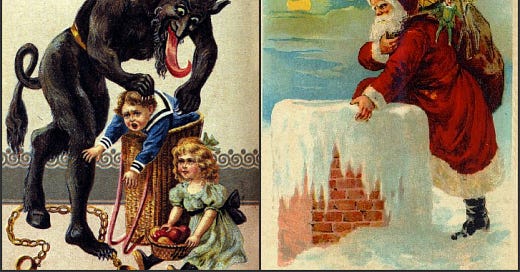






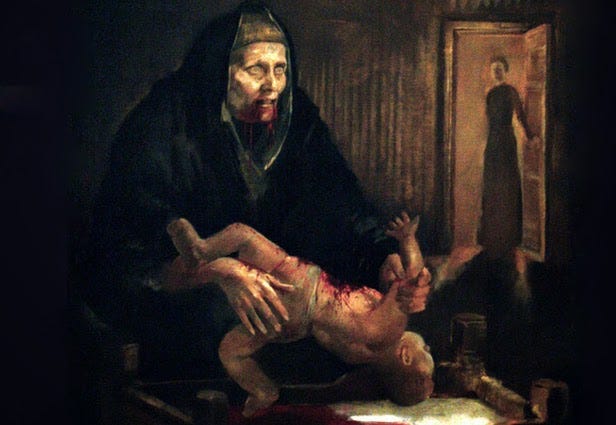
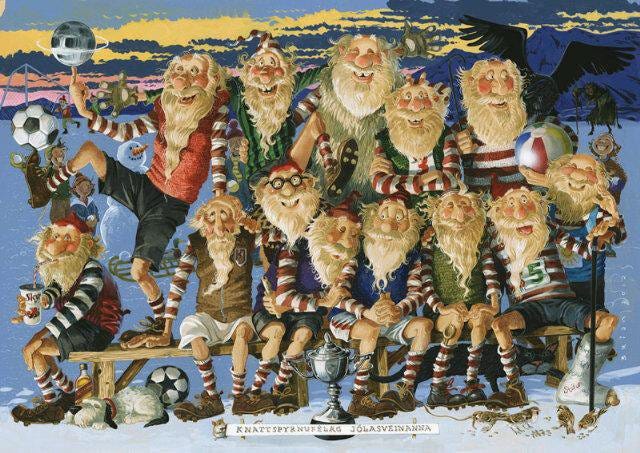
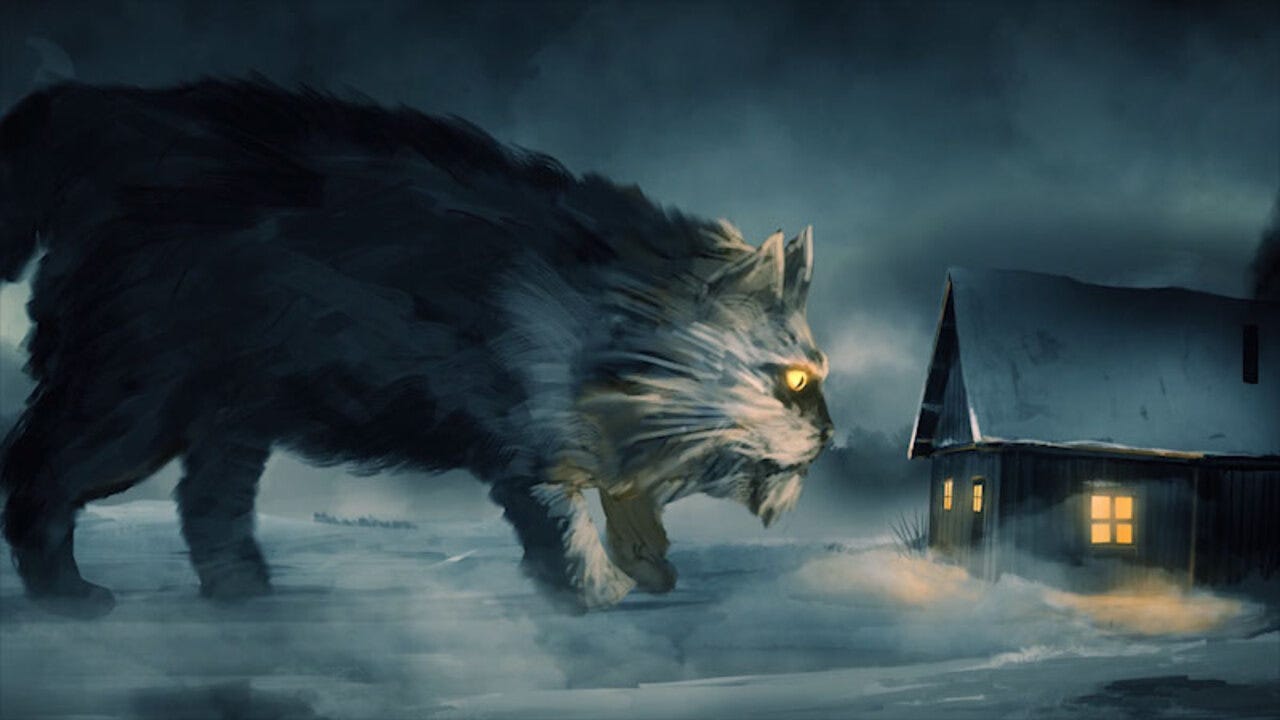
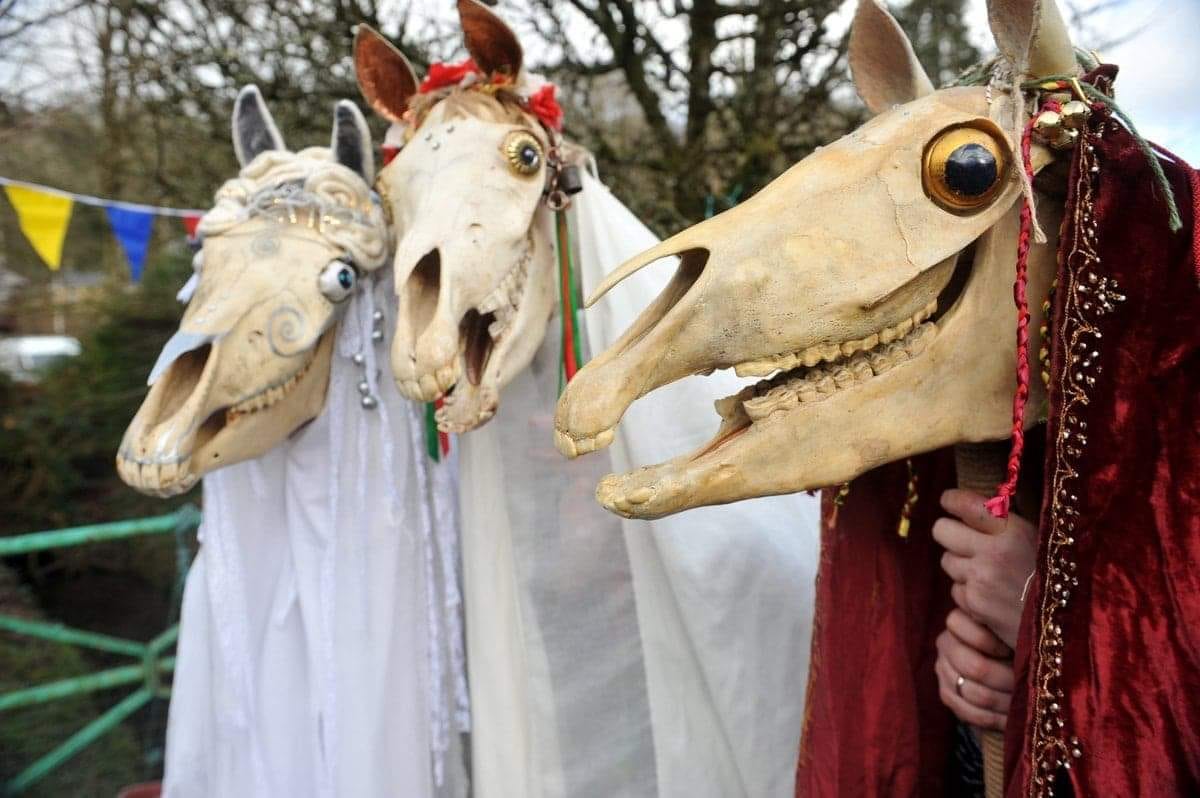


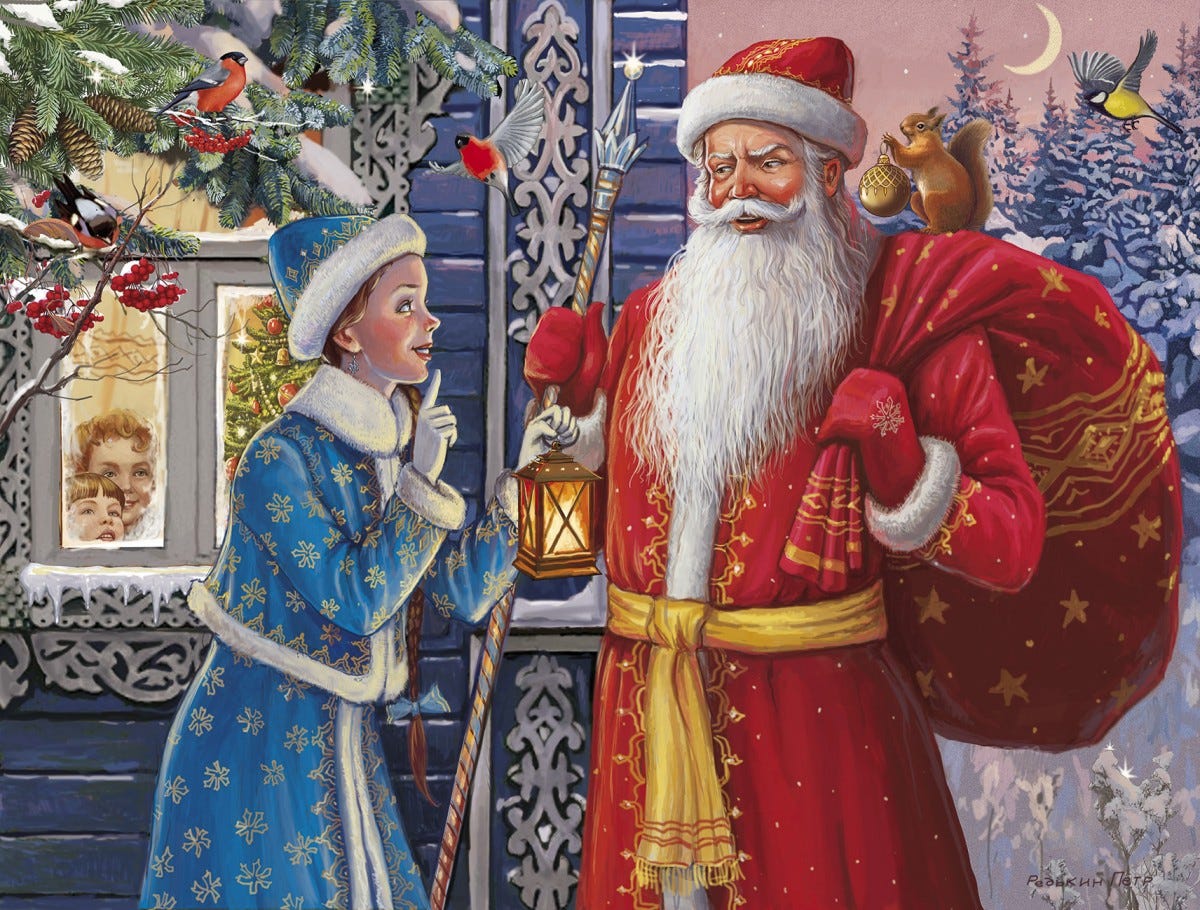
This is so interesting. Thank you.